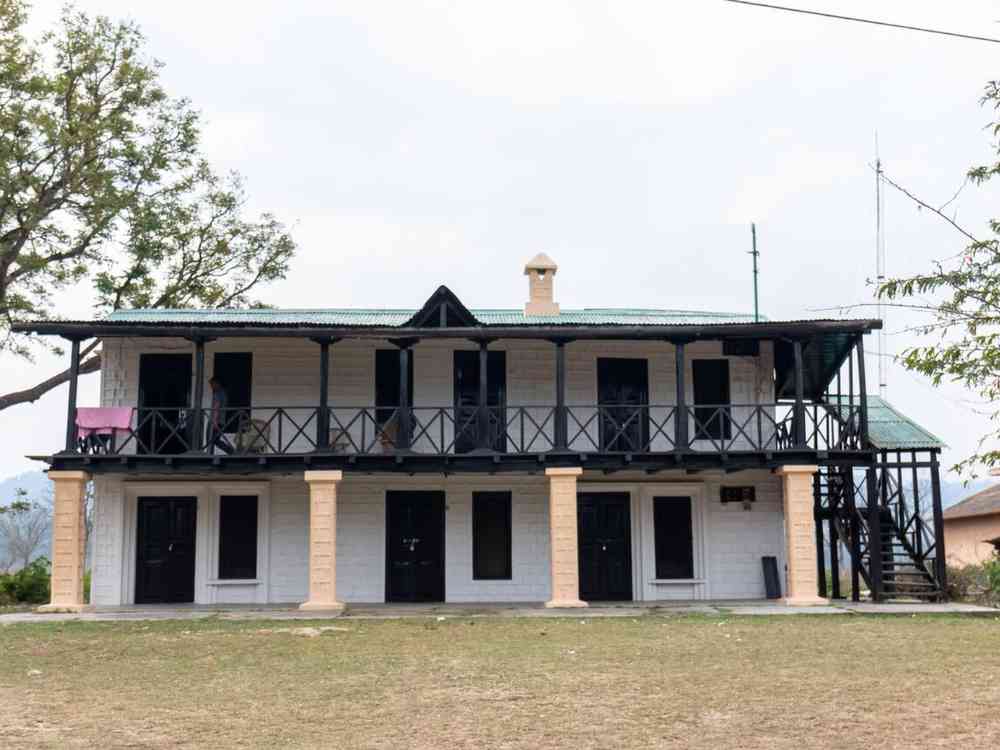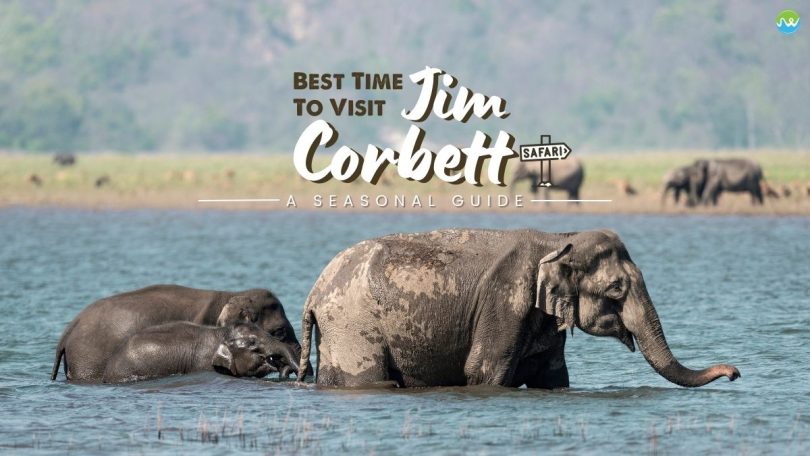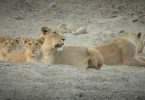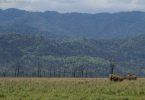Two roads diverged in a wood, and I,
I took the one less traveled by…
The above lines by Robert Frost speaks a lot about your dilemma before taking an escape into the wild. Have you ever got stuck at crossroads and thought what road to choose, then take the road less traveled by, the very spirit of adventure awaits you here in Jim Corbett Park. Choose the road of dense forest where tigers roam freely. Be the adventurer and get ready to plan your jungle safaris with ample of guidance provided by us which help you to know about different seasons and safari zones in Jim Corbett. Our comprehensive guide will help you to find which season highly suits you before planning your trip to Jim Corbett Park. We will help you to get rid of your dilemma about which season is the best time to visit Jim Corbett, be confident and take a safari into the wild, where nature speaks and calms your mind.
Safari Zones of Jim Corbett National Park

Jim Corbett offers jungle safaris to different safari zones spreading over the area of 1318.54 sq km in Uttarakhand. The safari duration is approx. 3 hours 30 minutes and the entry gates also differ depending on the zone. Only six people are allowed to sit in gypsy while going for a safari.
The safaris are done in two slots Morning and Evening. Morning safaris starts early in the morning from 7:00 am to 10:00 am and evening safaris commences at 2:00 pm in the afternoon and wrap up by 5:00 pm in the evening. Morning slots are best for safari as compared to evening.
Jim Corbett Park is divided into 8 zones because of its large area. The multiple zones division of the forest helped the officials to manage the forest and run jungle safari efficiently. Some zones are added very recently to accommodate tourists coming to Jim Corbett for safaris during peak seasons.
Dhikala Zone
This zone is the most sought-after zone for Jim Corbett Safari, it offers wholesome experience to the visitors which comprises of night stays at forest houses inside the park. This zone is pretty rich in wildlife with spectacular landscapes. You should book your safari at least 45 days prior if you want to go on your safari in Dhikala zone. This zone has the largest number of tigers. There are lodges inside the Wildlife safaris, bird watching, nature walks, wildlife photography. This is the only zone which offers day Canter safaris.

Dhikala zone offers five different rest houses to stay at night and one can immerse in wilderness. The forest rest houses/lodges in Dhikala zone are:
- Dhikala Forest Lodge
- Gairal Forest Lodge
- Sarapduli Forest Lodge
- Khinnanauli Forest Lodge
- Sultan Forest Lodge
Bijrani Zone

This zone is the best zone for tiger sighting after Dhikala. The zone comprises picturesque landscapes, grasslands, abundant streams and a plethora of flora and fauna. The entry gate for this zone is Amdanada gate. The zone offers day safari to visitors and accommodation people can stay in hotels and resorts located in the midst of nature in Dhikuli region which is outside the safari gate. Tigers and leopards are commonly sighted in this zone.
Jhirna Zone

Jhirna zone is situated in the southern region of Jim Corbett. The zone consists of grasslands which are known as chaurs in local language. The topography of Jhirna zone is of dry deciduous type (trees which shed their leaves annually). Animals are easily sighted due to its topography. Deer, Chital, Nilgai, Elephant are some of the commonly found animals. This zone has a plethora of birds. It offers beautiful landscapes, mountain views, ponds amidst the safari into the jungle. In this zone only day safaris are available.
Dhela Zone

This zone is known for a significant number of tiger sighting. You need to book a safari at least 15 days prior in this zone. The day safari runs in this zone throughout the year. Animals such as Royal Bengal Tiger, Asian Elephant, Spotted Deer, Barking Deer, Chital, Sambar Deer, Wild Boar are found here. Different species of birds could be found in this zone such as Asian Paradise Flycatcher, Rested Kingfisher, Pheasant, Common Grey Hornbill, Duck. There are Sal trees, Jamun, Amla trees which are commonly found in this region.
Garjiya Zone

This zone remains open throughout the year. The gate for the zone is Ringora gate which is approx 4 kms away from Ramnagar. Garjiya zone is lesser known but a beautiful one, it is a home to a wide variety of wildlife such as tigers, wild boars, deer (barking, spotted, sambhar) and a wide range of birds.
This zone is named after the famous Garjiya Devi Temple. It is a less crowded zone providing the best safari experience to the visitors. Its proximity to Garjiya Devi temple, this zone holds cultural significance. People get to see the Kosi river and landscapes making it the perfect zone for escape into nature.
Durga Devi Zone
The entry gate for this zone is Durga Devi gate which is 28 kms away from Ramnagar, which makes it the farthest zone. This zone lies in the southeastern part of Jim Corbett. It has a wide variety of wildlife like every other zone in terms of birds, mammals, reptiles and flora as well. This zone also offers night stay at Lohachaur Forest Rest House.
Phato Zone
Phato zone is situated in Maldhan Village which is the southern part of Jim Corbett. It is 24 kms from Ramnagar. The region lies in the Terai Paschimi region. This zone is open throughout the year. The Phato zone is known for its lush Sal forest. This zone is the best zone for Tiger sighting. It was added quite recently under Jim Corbett National Park, it is the newest zone yet best zone for tiger spotting. In this zone visitors can stay overnight in tree houses or regular rooms. You will need permit from forest department for night stay.
Sitabani Zone

This zone comes under Pawalgarh Tiger Conservation. It is a picturesque area ideal for nature enthusiasts who love to spend time in nature. This is the only zone in the park which is open for walking safaris. Tourists can explore the forest on foot. Sitabani is open round the year.
Flora and fauna of this zone includes Sal tree, Sheesham tree, Sambhar deer, Barking deer, tigers respectively. This region has historical and mythological significance. It is believed that Goddess Sita, wife of Rama spent some days during her exile in the jungles of Sitabani in the Hindu epic, Ramayana. This is not the core zone of Jim Corbett. This zone offers day safaris.
Seasonal Guide: Spend your Best Time in Jim Corbett
Jim Corbett offers distinct experiences according to the visitor’s travel preference of season throughout the year.
Winter (November to February)

Jim Corbett’s best time for jungle safaris is winter season. Jim Corbett opening months for winter season is from November to February. The chances of spotting tigers are higher in winter months especially at noon as tigers bask in the sun. The temperature ranges between 5°C to 30°C.
This season is excellent for photography; misty mornings with sunrise make the environment conducive for wildlife photographers. The weather remains pleasant during the day and tourists can indulge in outdoor activities like treks and birdwatching. The chances of spotting animals increases in winters because of the sunlight required by the animals due to intense cold.
Tigers, deer, gharial, monitor lizard, crocodile, Asian elephants and a plethora of migratory birds are commonly found in Jim Corbett. This season offers wholesome experience to winter lovers. You can even explore other tourist attractions as well in the nearby areas of Jim Corbett during summer season such as Corbett Falls, Dhangarhi museum, Barati Rau waterfalls.
All safari zones remain open during this season. The open Jeep safaris are enjoyed by the visitors as the weather remains pleasant in the daytime and the exposure to sunlight is loved by them hence winter is the best season to visit Jim Corbett to see tigers.
Summer (March to June)

“Listen to the night wind in the trees,
Listen to the summer grass singing,
Listen to the time that’s tripping by,
And the dawn dew falling.”
Summertime in Jim Corbett may be quite hot as the temperature goes up to 40°C. Mornings and evenings however remain cool making it suitable for safaris. Summer is the best season to visit Jim Corbett to see tigers because weather conditions are most favorable during summers when it comes to animal sightings. The animals usually migrate from place to place in search of water resources and hence increase the chance of sighting for visitors. During summers tourists may indulge in various activities such as jungle safaris, river rafting, fishing, zipline, camel safaris, etc. During this season all the zones remain open for jeep safaris.
Monsoon (July to October)

The core zones remain closed during the rainy season due to the increasing risk of landslides and flooding. The park receives moderate to heavy rainfall. The temperature ranges between 24°C to 31°C. Only three zones remain open in this season namely: Jhirna, Dhela, Garjiya.
Although most of the core zones remain closed during this season, if you are someone who is looking for a peaceful retreat into nature, then the rainy season is the best time to visit Jim Corbett. We get a glimpse of wild animals such as deer, elephants, snakes, foxes, tigers during this season.
Rainy season has its own charm in Jim Corbett. You can witness greenery and the flowing rivers and get yourself relaxed by viewing lush green grasslands. The best part of monsoon is having maggi in the midst of mountains and gorges flowing through the mountains. The foggy weather blanketing all over the mountains, the picturesque landscapes and vibrant greenery due to rain amplifies the forest beauty.
Apart from safaris in a few zones, you can explore other nearby places such as Nainital which offers lake view and treks. Nainital is approx. 2 hours away from Jim Corbett. Whether it is a thrilling safari experience or the peaceful lakeside stroll.
Secure your spot now and experience the wild and unwind in the serene hills like never before with our Magnetic Jim Corbett and Nainital Tour Package.
Best Time to Visit Jim Corbett
Jim Corbett National Park offers captivating experience round the year, each season casting its own spell on the visitors. The park remains open throughout the year and visitors get to see different shades of Jim Corbett in all three seasons. It solely depends on your personal preference what you prefer to see and experience. Each season offers a unique and exhilarating experience to the visitors with respect to season and the wildlife it offers.
Winter is the best season for wildlife safaris. It is recommended to visit Jim Corbett for wildlife lovers and photographers during winters because the cold weather makes it ideal for tiger spotting and other animals.
The summer season in Jim Corbett is also considerably the best time to visit Jim Corbett when it comes to tiger sighting and birding. It offers a different experience altogether to those who love taking trips in the summertime.
Moreover, Monsoon season in Jim Corbett feels like a heaven on earth offering the lush green forests and rivers such as to the visitors. If someone loves greenery and rain in the mountains then Jim Corbett is the best place to witness such beauty.
Imagine sitting in the misty mountain regions of Jim Corbett, feeling the warmth of a cup of tea or coffee that you are holding in your hand, raindrops swiftly dripping on the leaves around you and the vibrant greenery endlessly stretches before your eyes. Could nature’s serenity get any better while you sit in this state of tranquility? You can explore other nearby areas in the meantime apart from your safaris.
The long drives into the nearby altitudinal areas of Corbett such as Amgarhi, Kotabagh, Ranikota, Pangot (near Nainital) which adds more charm to your thrilling adventure trip in Jim Corbett. Three zones remain open in monsoon, namely- Jhirna, Dhela, Durga Devi zones. You can plan your trip according to your seasonal preferences and connect to nature.

Do’s and Don’ts of Safaris
Here are some rules that you must follow to maintain the decorum while going on a safari in Jim Corbett.
- Book your safaris at least 45 days prior if you want to go on your safari in Dhikala zone.
- Wandering and going down of gypsy while you are on safari is not allowed.
- Do not carry firearms inside the park.
- Do not litter. There are garbage bins placed at a certain distance. Kindly use those bins for throwing trash.
- Maintain silence while you are on safari because it may decrease the chances of spotting wild animals. In loud noise the animals might behave indifferently.
- It is recommended to wear subtle color clothes while on safari which get camouflaged into the surroundings, try to avoid wearing vibrant clothes.
- You can carry binoculars and cameras in order to see and capture wildlife.
FAQs
Is December a good time to visit Jim Corbett?
December is the best time to visit Jim Corbett because in winters there are higher chances of tiger sighting, usually animals tend to come out into the open during the day to bask in the sun. The misty landscapes form a perfect backdrop for capturing wildlife and scenic landscapes.
Is May a good time to visit Jim Corbett National Park?
May is the best time to visit Jim Corbett because you can encounter tigers and different animals because of the warm weather conditions the animals tend to come out in search of water bodies. Yes, May comes under summer season. the summer season in Jim Corbett begins from March and ends in June
Is August a good time to visit Jim Corbett?
August comes under monsoon season, it is a good time to visit Jim Corbett if you love greenery and enjoys the serene rivers flowing through the mountains. You will spot lots of birds and animals in the midst of nature. The safaris takes place only in three zones during monsoon namely Jhirna, Dhela and Garjiya zone because there is a increasing risk of landslides in the core zones of Jim Corbett.
Is June a good time to visit Jim Corbett?
June is the best time to visit Jim Corbett because the weather conditions are ideal for jeep safaris and spotting tigers and birds. Despite the high temperature in the area, it offers the best experience to the tourists.
April is a good time to visit Jim Corbett?
April is the harbinger of summers in the Jim Corbett, it is the best time to visit Jim Corbett as there will be less crowd visiting the park as it marks the beginning of fiscal year and school year. This may provide a beautiful yet thrilling experience to the visitors.
Book your escape to Jim Corbett with JustWravel’s exclusive Jim Corbett Safari Package.








Informative is the word for this.
May end for safari